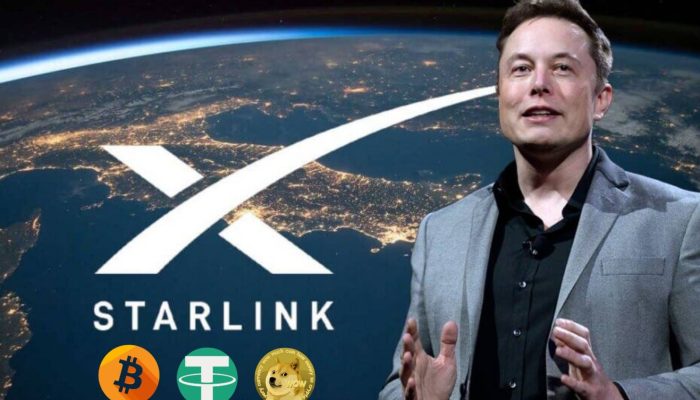Web3 is increasingly gaining popularity, particularly in the decentralized finance (DeFi) industry. Decentralization is a way people try to be independent of a central body. It promotes inclusivity while giving every member of the community decision-making abilities. Web3 is looking to explore decentralization and all related protocols for the benefit of users.
-----Cryptonews AD----->>>Sign up for a Bybit account and claim exclusive rewards from the Bybit referral program! Plus, claim up to 6,045 USDT bonus at . https://www.bybit.com/invite?ref=PAR8BE
<<<-----Cryptonews AD-----
What Is Web3?
Web3 represents an upgrade of the World Wide Web, focusing on decentralization. Today, the tech industry is making decentralization more accessible, especially to those who believe in inclusivity. In simple terms, it is an ecosystem leveraging blockchain technology for settling needs.
While the world is yet to move from Web2, some people believe that Web 3.0 is the future of the internet. The internet has had an expansive growth over the years. It has also moved from being just the interconnection of networks to being a way for humans to connect globally.
So, creators hope to make Web 3.0 accessible to everybody and make it convenient to transport data from one point to another. Indeed, many critics have frowned at Web2’s dependency on large corporations. They have faulted the web’s centralization while clamoring for a more user-friendly system.
Further, blockchain technology is an in-demand technology in the digital world. Businesses are leveraging it to create secure and more inclusive systems for their users. And because of the technology’s complex algorithm, it has one of the most secured systems in the digital space.
Today, blockchain technology is home to new industries, such as decentralized finance, GameFi, and NFTs. It has made it easier for creators to secure and reliable platforms. Similarly, it has created an avenue for users to earn more money.
Web3.0 – How It All Started
Like every other technology, the world wide web developed in stages; these stages ensured the internet developed with time. Without different stages of development, it would not be easy to enjoy the internet as we have it today. Below are specific marks of development the world wide web had before moving into exploring web 3.0
What Is Web 1.0?
Web 1.0 is the first stage of the worldwide web characterized by simple websites. Unlike today where there are complex websites, the world previously used simple sites and webpages. Indeed, the term “web 1.0” never existed till the creation of the second generation of the worldwide web known as web 2.0.
The internet underwent massive development from plain HTML sites to complex languages. In the early 1990s, most websites had the HTML mark-up, making them basic and without colors, like we have today. Below are some of the features of Web 1.0.
Simple pages
While the world still utilized this first generation of world wide web, sites were simple and statics. Developers did not create them as interactive and dynamic as we have today. Previously, sites did not respond to user behavior, and users could only access information without quality graphics.
Web files
Additionally, it could not utilize the database to store site information. Unlike present sites with databases to store website content, this stage of development stored data in website files. This could also be an attempt to save space, primarily because things were in their early stages.
Basic designs
During the early years of the world wide web, sites had basic designs. And since HTML is not very visual, most sites were void of beautiful and colorful designs. This is a contrast to modern sites. Modern sites prioritize beautiful and clean designs since websites compete favorably in their niche.
HTML tags
HTML tags are characters composed of commands for the webpage. When the website still leveraged web 1.0, there were many HTML tags, which were often incompatible with many websites.
Emailing
Submitting an email on web 1.0 is almost impossible because it does not support server-side scripting. However, you can send your email to a separate email address provided by the website. Also, this is inconvenient for many people, making it one of the major developments.
What Is Web 2.0?
The second generation of the worldwide web brought so much development. Similarly, this is the form of the web we are presently using. The word “web 2.0” originated from a session with O’Reilly Network, and it changed how humans handle and control their data.
Unlike web 1.0, web 2.0 assured a higher level of control, particularly for users. It also revolutionized user experience, making sites responsive and visually appealing. Users can understand and respond accordingly to new changes because of the wide range of programming languages used in web development.
Web 2.0 is essential a generation of world wide web, focusing on usability. Most websites created with this technology in mind are responsive and user-friendly. It also transformed how humans perceive websites, leading to a new generation of websites, such as social media platforms and search engines.
It’s safe to state that there has been no technical upgrade from web 1.0 to web 2.0. However, it marked a point where programmers shifted from creating websites. And because this generation involves inclusivity, websites need to carry readers along.
Features of Web 2.0
Functionality
Web 2.0 has improved functionality, mainly when users search with keywords. Related responses can easily show up with this upgrade. Previously, it wasn’t easy to search on platforms, but now things are different.
Scalability
Web 2.0 is noticeably more scalable than web 1.0. Scalability is a system’s ability to meet new demands, significantly higher workload. You enjoy more incredible speed and efficiency with this upgrade.
Rich user experience
One of the best improvements of web 2.0 is the user experience it gives. Users can easily change things they don’t like, such as the page’s size. With a rich user experience, people can easily access information.
Introduction of applications
This brought the creation of applications, which are fundamental in today’s time. Applications are one of the essential parts of the internet.
Challenges Associated With Web 3.0
There are different challenges associated with using web 3.0. Experts find it vague and unfamiliar because it explores a new kind of technology. Still, some people believe it may change how the internet operates. Below are some of the challenges with web3.0.
Vastness
One of the challenges of web 3.0 is the vastness of the internet. The internet is vast and also contains a lot of data. Web 3.0 has to deal with how and wide the internet can be.
Uncertainty
Uncertainty is a great challenge affecting web 3.0 creation. This may affect the presentation of data. In cases where patients have symptoms of different ailments, it would be difficult to pinpoint the right issue.
Inconsistency
Inconsistency deals primarily with data that are not consistent. This is a huge challenge, making it difficult to present information appropriately.
Vagueness
Some queries are vague and without direction. To create web 3.0, data must be specific and straight to the point.
Conclusion
The internet has faced a series of changes from the advent of web 1.0 to web 2.0. While basic designs and layout characterize the former, web 2.0 embraces sophistication and user experience. The third creation, which is still in the works, hopes to leverage blockchain to reduce dependency on big corporations. This may increase inclusivity and user experience, particularly in terms of providing greater service.

The post Everything You Need To Know About The Web3.0 appeared first on CryptoTicker.
Everything You Need To Know About The Web3.0




